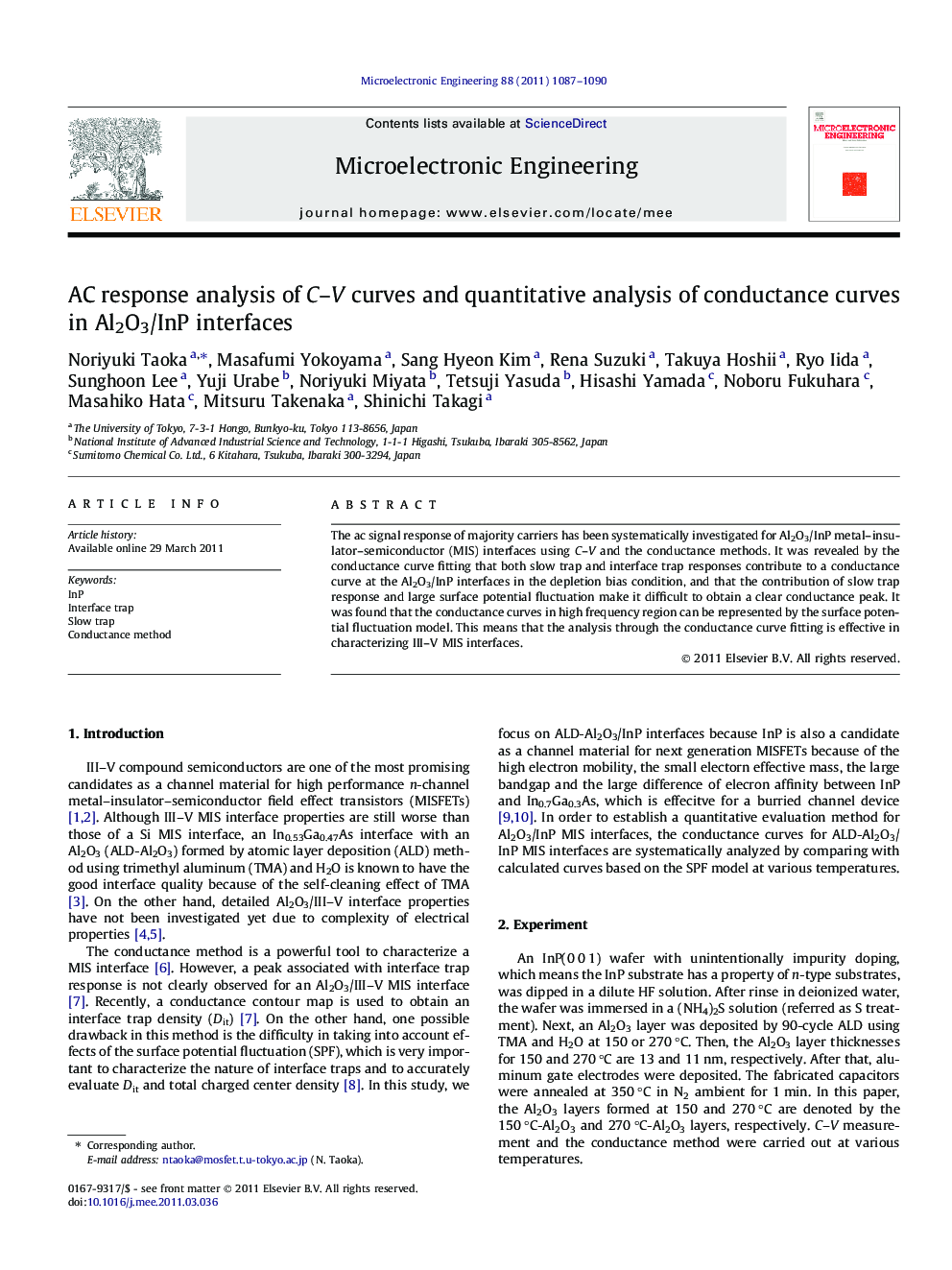| Article ID | Journal | Published Year | Pages | File Type |
|---|---|---|---|---|
| 540454 | Microelectronic Engineering | 2011 | 4 Pages |
The ac signal response of majority carriers has been systematically investigated for Al2O3/InP metal–insulator–semiconductor (MIS) interfaces using C–V and the conductance methods. It was revealed by the conductance curve fitting that both slow trap and interface trap responses contribute to a conductance curve at the Al2O3/InP interfaces in the depletion bias condition, and that the contribution of slow trap response and large surface potential fluctuation make it difficult to obtain a clear conductance peak. It was found that the conductance curves in high frequency region can be represented by the surface potential fluctuation model. This means that the analysis through the conductance curve fitting is effective in characterizing III–V MIS interfaces.
Graphical abstractThe ac signal response of majority carriers has been systematically investigated for Al2O3/InP MIS interfaces using C-V and the conductance methods. It was revealed by the conductance curve fitting that both interface trap (Path A) and slow trap (Path B) responses contribute to a conductance curve at the Al2O3/InP interfaces in the depletion bias condition. Also, it was found that the conductance curves in high frequency region can be represented by the surface potential fluctuation model. This means that the analysis through the conductance curve fitting is effective in characterizing III-V MIS interfaces.Figure optionsDownload full-size imageDownload as PowerPoint slide
